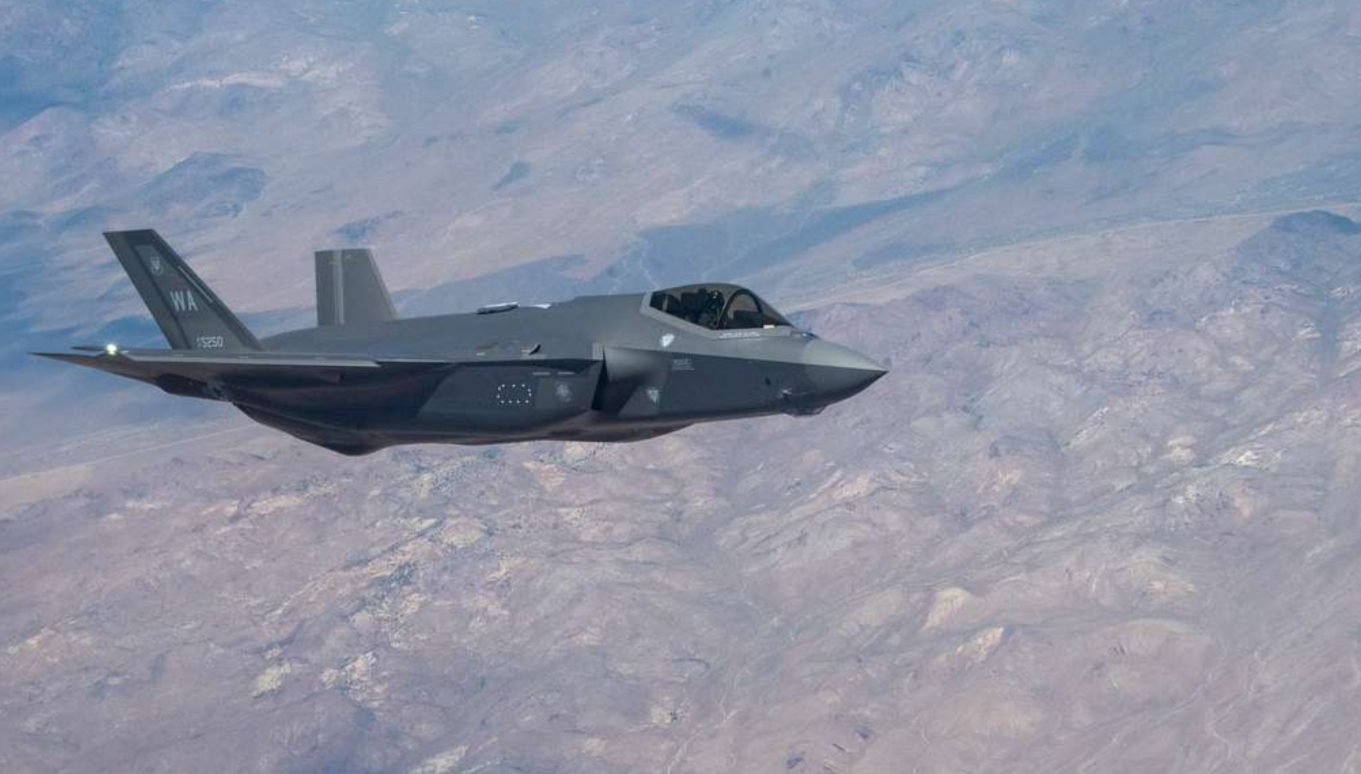More than a month after the Pentagon announced it was sending Air Force F-35s, thousands of U.S. Marines and Sailors, and American warships to the Persian Gulf region in response to Iran’s attempted seizures of commercial vessels, officials say they see no signs the situation is calming down.
“We continue to see harassment,” Deputy Pentagon Press Secretary Sabrina Singh told reporters Aug. 29. “We have not seen that threat drop, I would say, so we haven’t seen a reason to move our forces out.”

In July, the U.S. dispatched some of its most advanced air power into the region with a squadron of F-35s to respond to Iranian actions in the Gulf and the Strait of Hormuz, a choke point between the Persian Gulf and the Gulf of Oman, through which roughly 20 percent of the world’s oil supply flows.
“In an ongoing effort to ensure the security and freedom of navigation in the region, U.S. Air Forces Central (AFCENT) reaffirms its unwavering commitment to maintaining stability and safeguarding global trade in this vital maritime route,” the command said after one recent F-35 mission over the Gulf.
Following the deployment of Hill Air Force Base’s fifth-generation stealth fighters, the amphibious assault ship USS Bataan, carrying a squadron of vertical or short takeoff and landing (V/STOL) Harriers, was sent to the region.
As part of the 26th Marine Expeditionary Unit, the Harriers are flying maritime missions around the Gulf and the Strait of Hormuz, U.S. officials said.
“They provide enhanced capabilities which strengthen the already robust array of theater assets throughout the joint force,” Cmdr. Rick Chernitzer, the spokesman for Naval Forces Central Command, told Air & Space Forces Magazine.
The Harriers have helped supplement some of the fighter coverage over the Gulf, though the Air Force still has a significant intelligence, surveillance, and reconnaissance mission and tanker support role, U.S. officials say. The Navy has also flown P-8 Poseidon maritime patrol aircraft in the region.
“The Harriers augment U.S. Air Force Central Command assets, integrating with them to support a variety of mission sets,” Chernitzer said.
The U.S. military footprint in the region has shrunk as the Pentagon has sought to shift assets to Asia and Europe to deter China and Russia. But DOD has had to bulk up its force in the Middle East on short notice in response to threats from Iran and Russia multiple times in the past year.
The Pentagon has developed contingency plans to put Marines on some commercial vessels in the region, but no decision has been made as yet to place them on those vessels, U.S. officials say.
The F-35s in particular have also proved helpful in dissuading Russia from attacking U.S. drones in the skies over Syria. As for the Gulf, Singh said Iran’s Islamic Revolutionary Guard Corps remained a threat. So, for now, the U.S. posture is staying on the stronger side.
“Over the past few weeks, we’ve seen harassment from IRGC-backed groups over commercial ships,” Singh said. “As long as there remains a need for these forces to be in the region, they’re going to stay there.”
Source: Air & Space Forces Magazine





